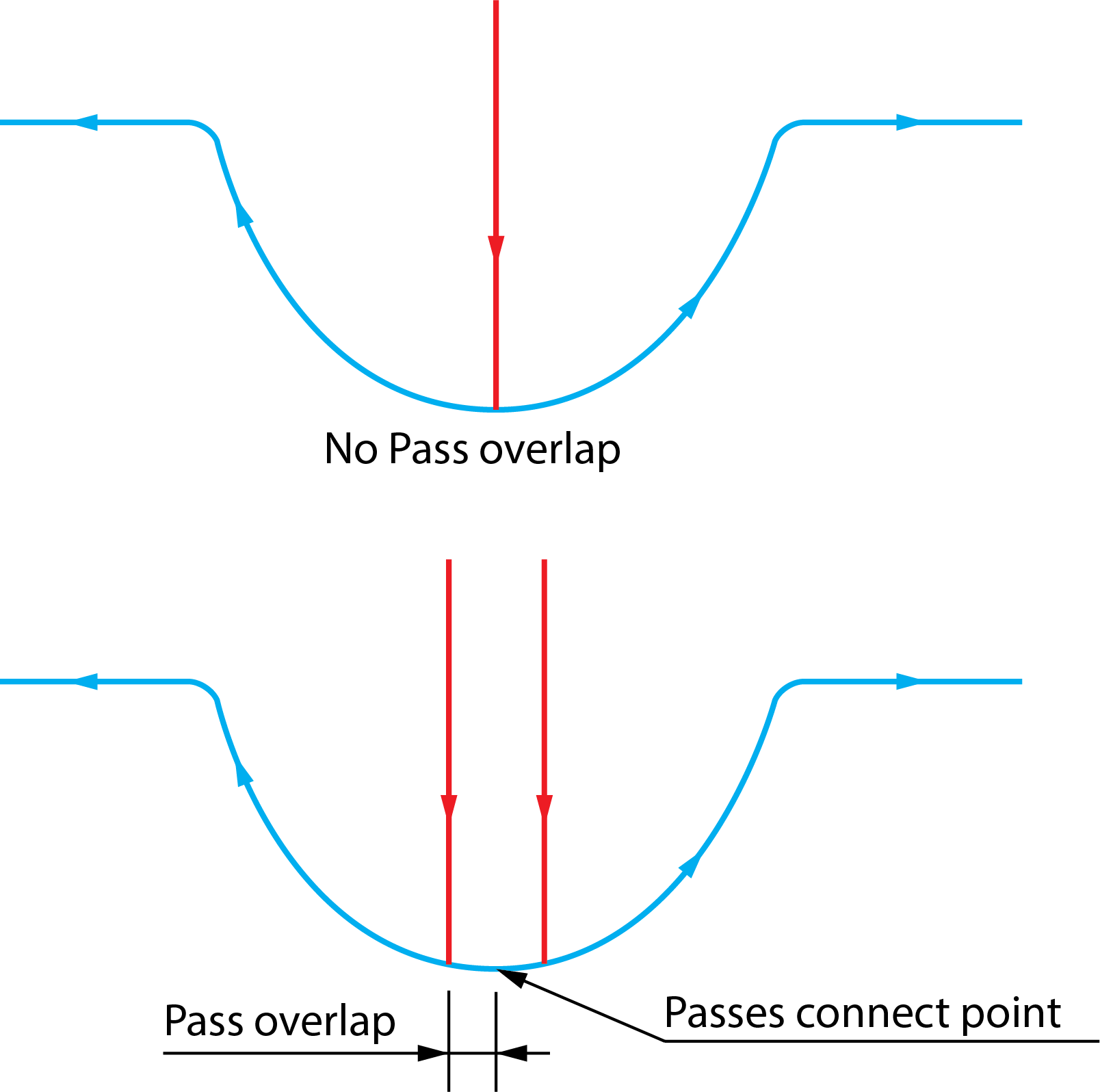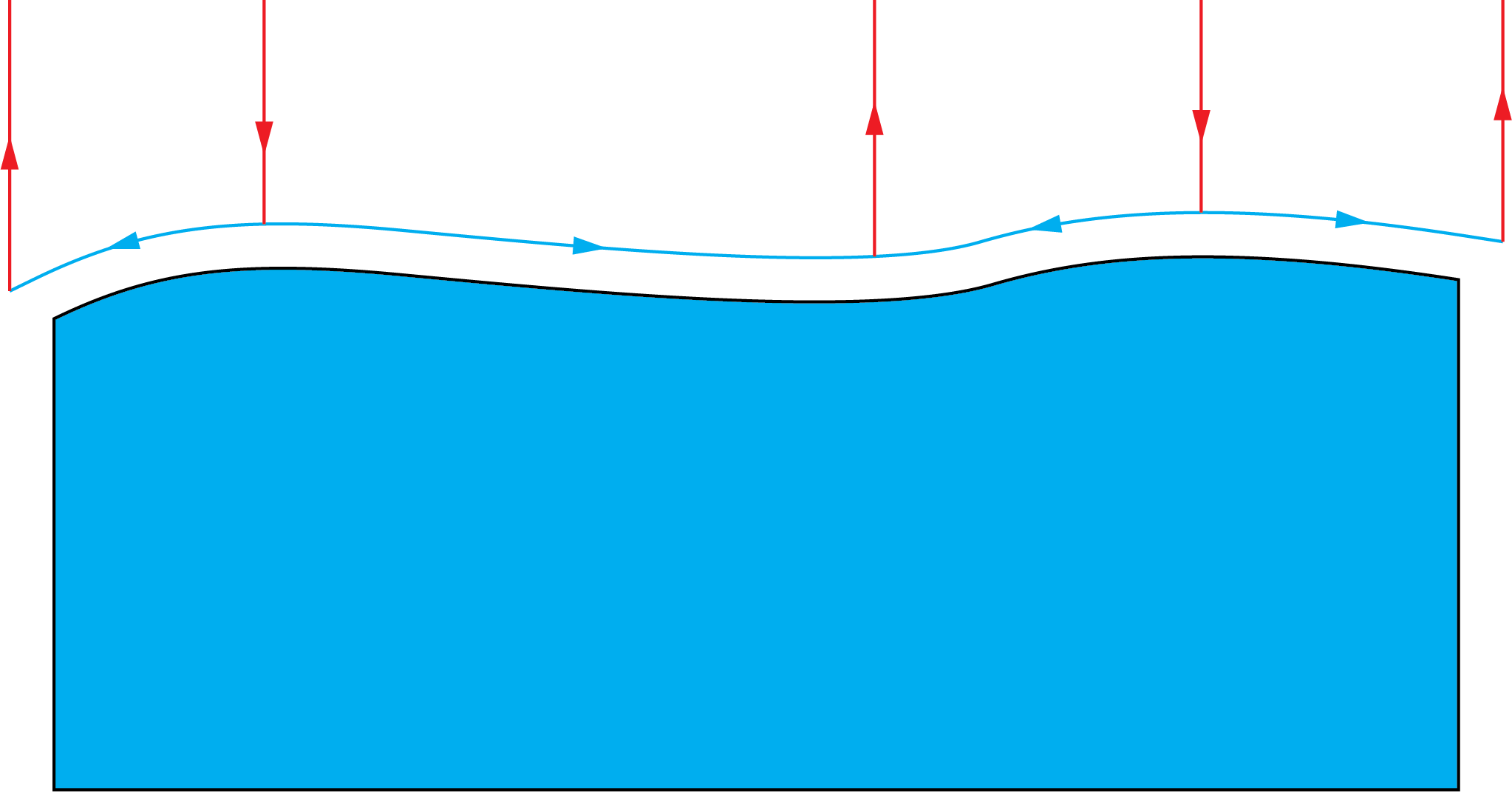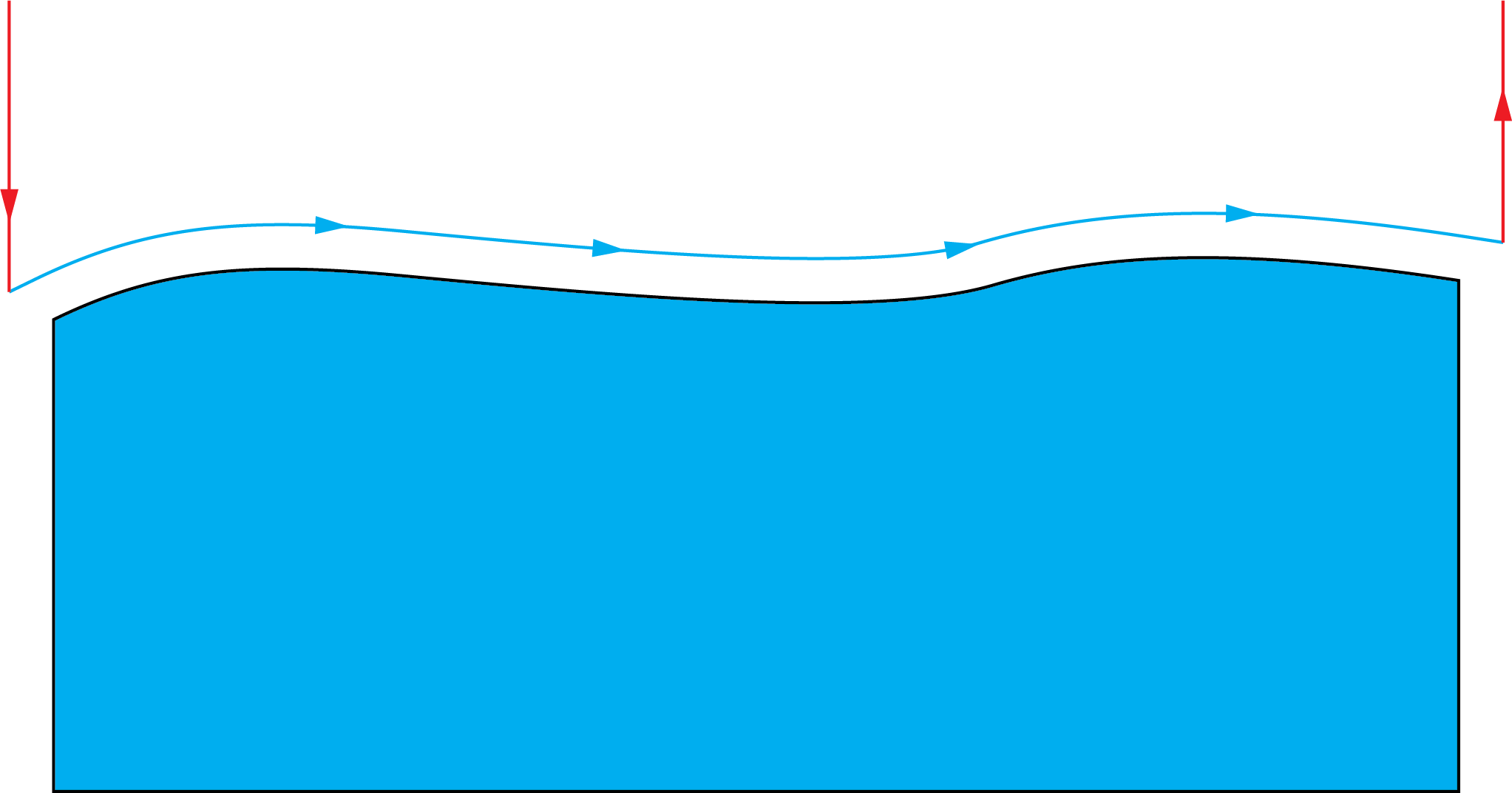Down/Up Mill parameters
This page enables you to define the parameters of the Down/Up milling.
|
This page is available for all strategies except for Contour roughing, Hatch roughing, Rest roughing, Horizontal Machining and Constant Z machining. Unless Down/Up milling options are chosen on the General page of the linking dialog box, the parameters on this page are disabled.
|
Pass overlap
When a pass is broken in order to perform down and up movements, each segment can be extended, from the point where pass segments are connected, so that they overlap. This ensures a smoother finish.

|
Since both pass segments are extended by the Pass overlap value, the actual length of overlap is twice the defined value. |
Shallow angle
Model areas with the inclination angles less than the Shallow angle value are considered as shallow. Such areas can be machined in either direction, as obviously up or down milling is irrelevant, and in these areas the tool path will be less broken up.
The image below illustrates the case when the inclination angles of the model faces are greater than the defined Shallow angle value.

In the illustration below the Shallow angle value has been increased resulting in no break up of the tool path.

Merge %
SolidCAM enables you to machine some segments of the tool path upwards where downward movement is preferred, and vice versa, to avoid too much fragmentation.
The Merge % parameter defines the limit length of the opposite segments as a relative percentage of the whole pass. When the percentage of the segments length where the direction of the machining to be changed is less than the defined value, the direction will not be changed.
Maintain milling direction
This option affects the ordering of Linear, Radial, Spiral and 3D Constant Step over passes. It ensures that all segments will either be climb milled or conventionally milled, if selected.
When the Maintain milling direction check box is not selected, passes will be either climb or conventional passes, depending on the relative position of the tool at the time.
Related Topics